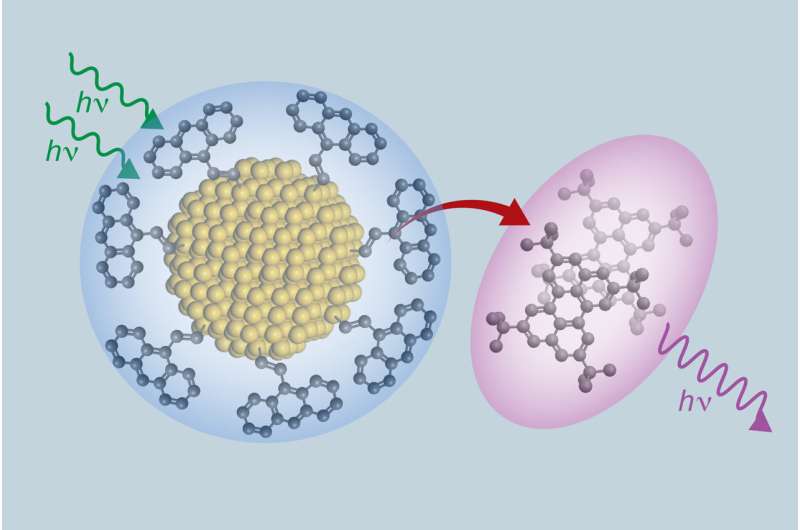Phys.org June 12, 2023
Hybrid structures formed between organic molecules and inorganic quantum dots can accomplish unique photophysical transformations by taking advantage of their disparate properties. However ,the electronic coupling is typically weak, leading photoexcited charge carriers to spatially localize to the dot or to a molecule at its surface. A team of researchers in the US (University of Utah, University of Colorado, UC Riverside, UT Austin) has shown that by converting a chemical linker that covalently binds anthracene molecules to silicon quantum dots from a carbon–carbon single bond to a double bond, they accessed a strong coupling regime where excited carriers spatially delocalize across both anthracene and silicon. By pushing the system to delocalize, they designed a photon upconversion system with a higher efficiency (17.2%) and lower threshold intensity (0.5 W cm–2) than that of a corresponding weakly coupled system. According to the researchers their results provides a complementary route for tailoring properties in materials for light-driven applications… read more. TECHNICAL ARTICLE

A new class of materials that can absorb low energy light and transform it into higher energy light is a composite of organic and inorganic materials… Credit: Nature Chemistry (2023)